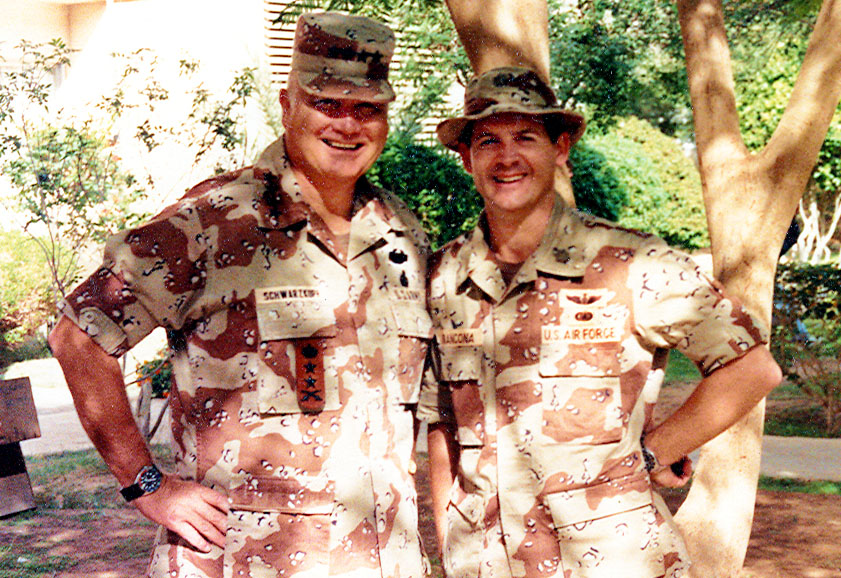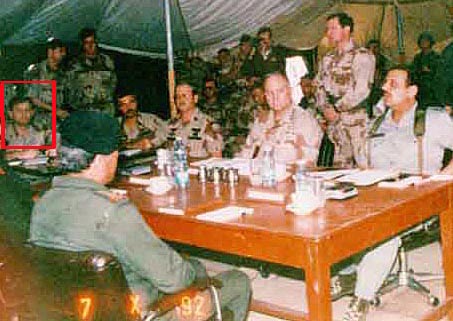Safwan,
Iraq—March 17, 1991...
"The
three Iraqi officers were already seated when I escorted the Central Command
chief of staff into the tent. The air was hot and oppressive—it would
get hotter when tempers on both sides flared later during the meeting.
The meeting had been requested by the Iraqis to discuss their declaration
that they intended to move their fighter aircraft from dispersal and secondary
fields back to their main bases. The Iraqi delegation consisted of
two general officers and their interpreter—a familiar face I had not seen
for well over two years—Major Majid Al-Hilawi of the Iraqi armed forces
Directorate of Military Intelligence. To say I was stunned to see
him would be an understatement—he seemed equally shocked. I was relieved
to see that he had survived the war, since I knew that the Iraqi military
intelligence headquarters compound had been bombed and severely damaged
during the air war. In fact, I knew that the specific wing of the
building that housed his office, where I had often sat with him, had been
virtually destroyed. Today we were sitting on opposite sides of the
negotiating table, now enemies. In an earlier chapter in Iraqi-U.S.
relations, we were colleagues. Actually, more than colleagues—we
were friends."

Rick with General Norman
Schwarzkopf - 1991
Ally
to Adversary – An Eyewitness Account of Iraq’s Fall From Grace tells
the story of U.S. policy toward Iraq from the final year of the Iran-Iraq
War through the end of the Persian Gulf War as seen through the eyes of
a military officer intimately involved in the execution of that policy.
In the late 1980’s, the U.S. Department of Defense entered a cooperative
relationship with the Iraqi Ministry of Defense. Rick Francona was one
of the officers tasked with going to Baghdad to work with the Iraqi armed
forces. During the course of his duties, he was exposed to senior
Iraqi military officers and operations. This unique insight into
Iraqi military operations, including the use of missile and chemical weapons,
was to shape his key role in the U.S.-led Desert Storm coalition fighting
Iraq three years later.

Rick at the head of the
table, Safwan - 1991
A fluent
Arabic speaker with extensive experience in the Middle East, Francona was
selected to serve as General “Stormin’ Norman” Schwarzkopf’s interpreter.
In Ally to Adversary, he relates his experiences in dealing with the Saudis
and other members of the coalition, culminating in the ceasefire talks
with the Iraqis. It was at a dusty airfield in U.S.-occupied southern
Iraq where he came face-to-face with his past dealings with the same Iraqi
officers he had worked with three years earlier. While Desert Storm
was for many a war against a faceless enemy, for Rick Francona it was a
war against friends and former colleagues.